Cards In This Set
| Front | Back |
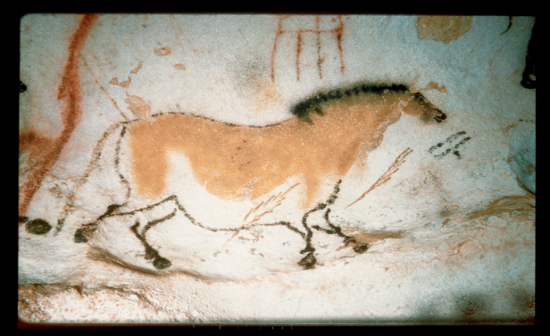 |
Horse, Lascaux Cave, ca. 15,000-13,000 BCE
- abstracted shapes around horse thought to be weapons - distended belly (magical powers of art) |
 |
Bear, Chauvet Cave, ca. 30,000-28,000 BCE
- bear representation in red outline - artists took advantage of the natural form and curves of the rock wall |
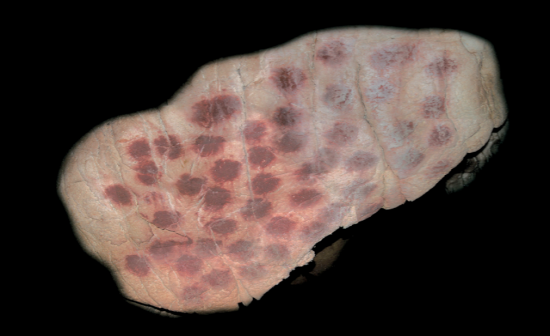 |
Hand Dots, Chauvet Cave
- painting technique in which large dots made by covering palm with paint and applying it to wall - some places fingers are visible - used to trace individauls/artists |
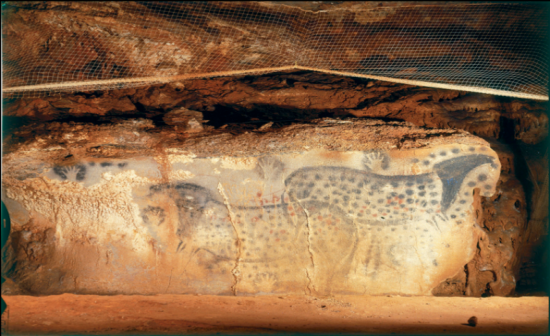 |
Spotted Horses and Human Hands, Pech-Merle Cave, ca. 16,000-15,000 BCE
- limestone - 11' 2 " approx length - gauge marks on animals suggested spears were thrown at walls (to guarantee success in the hunt) - pregnant animals in hope to simulate and encourage fertility and continuous food supply (magical power of art) - shaminism: animal's "spirit" is evident where a buldge in wall or ceiling suggests shape (religious ties), as you go through cave, abstract forms become 3D and you get hallucinations as you go in and out of consciousness (lack of oxygen) |
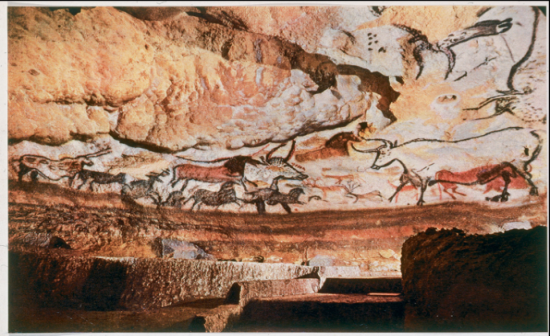 |
Hall of the Bulls, Lascaux Cave, ca. 15,000-10,000 BCE
- experiemental aspects of cave: to reach images, viewer had to go through long and unsecure path with eerie lights, sounds, smells --> all added to viewing experience (added physical context) |
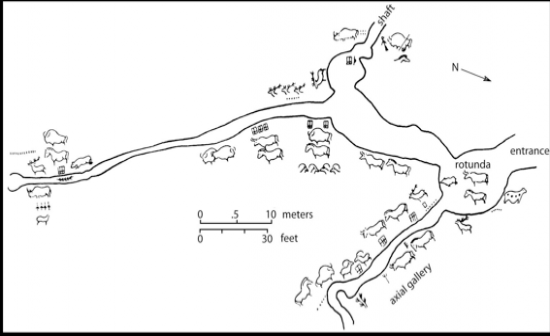 |
Schematic Plan of Lascaux Cave
- location of images inside cave - some so inaccessible that power of art was in making, not the viewing - the act of painting might have been religious or spiritual |
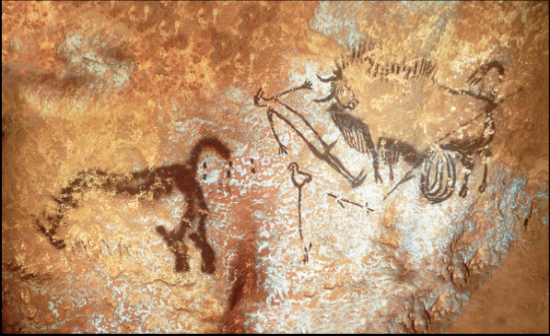 |
Rhinoceros, Wounded Man, and Bison, Lascaux Cave, ca. 15,000-13,000 BCE
- separate images or earliest known narrative? - bison has spear in belly and been disemboweled, hanging out of beast - man lying down, erection, dropped stick - rhino defecating - first tragedy? - very few drawings of humans, only in inaccesible parts of cave - possible that three parts drawn at different times (graffiti?) - compare the drawing of human (stick figure, pathetic, rigid, not real or vivid) to animals (majestic, powerful, accuracy) --> humans not comfortable depicting themselves (rare) |
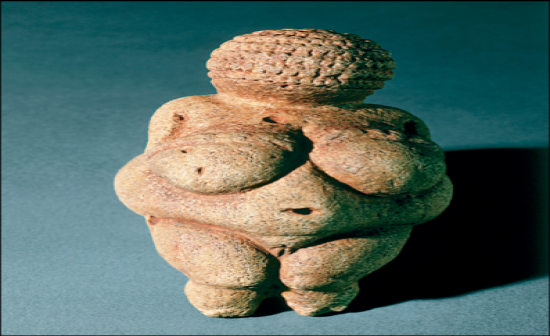 |
Venus of Willendorf, limestone, ca. 28,000-25,000 BCE
- sculpture of naked woman, large body type, seems to celebrate different body type - no face - hair covers it - arms behind back, not active or commanding figure - large exaggerated reproductive body parts --> figure of fertility - fat at this time would be impressive - we don't know if she is one woman or an ideal of women - could possibly show that some artists were women, and this is reflection on insecurities of body |
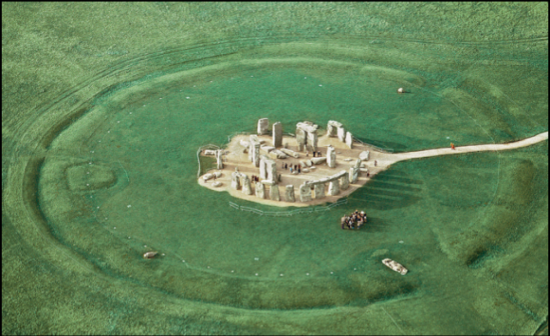 |
Stonehenge, ca. 2,100 BCE
Salisbury Plain, Wiltshire, England - prehistoric monument - many interpretations (may mark passing of seasons, vital for agriculture) - not a dwelling - what is certain: Stonehenge represents tremendous organization of labour and engineering, and blocks reveal stone working |
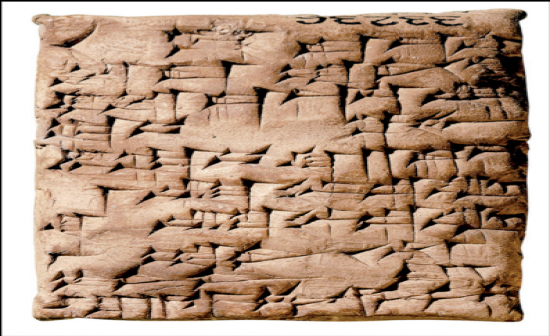 |
Babylonian deed of sale, clay with cuneiform writing, ca. 1,750 BCE
|



